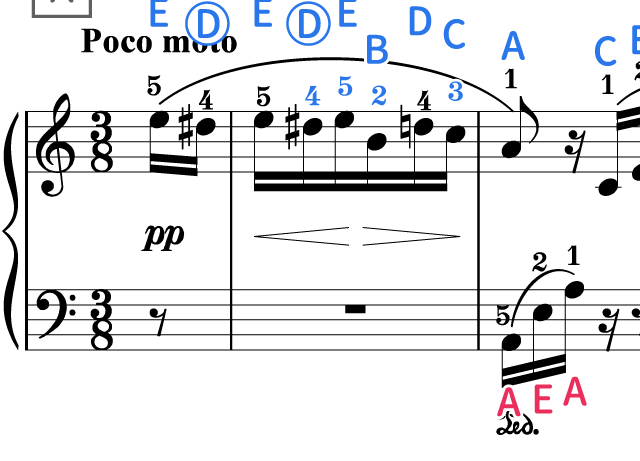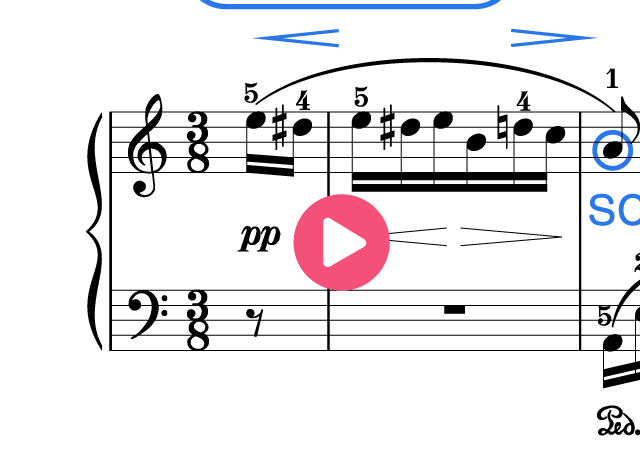How To Play (How To Practice)
1. Level : 3(Normal 1)
2. Beginning(A~)
1. Play With Emotion And Smooth Out Your Legato.
Play With Emotion (Play Dynamically)

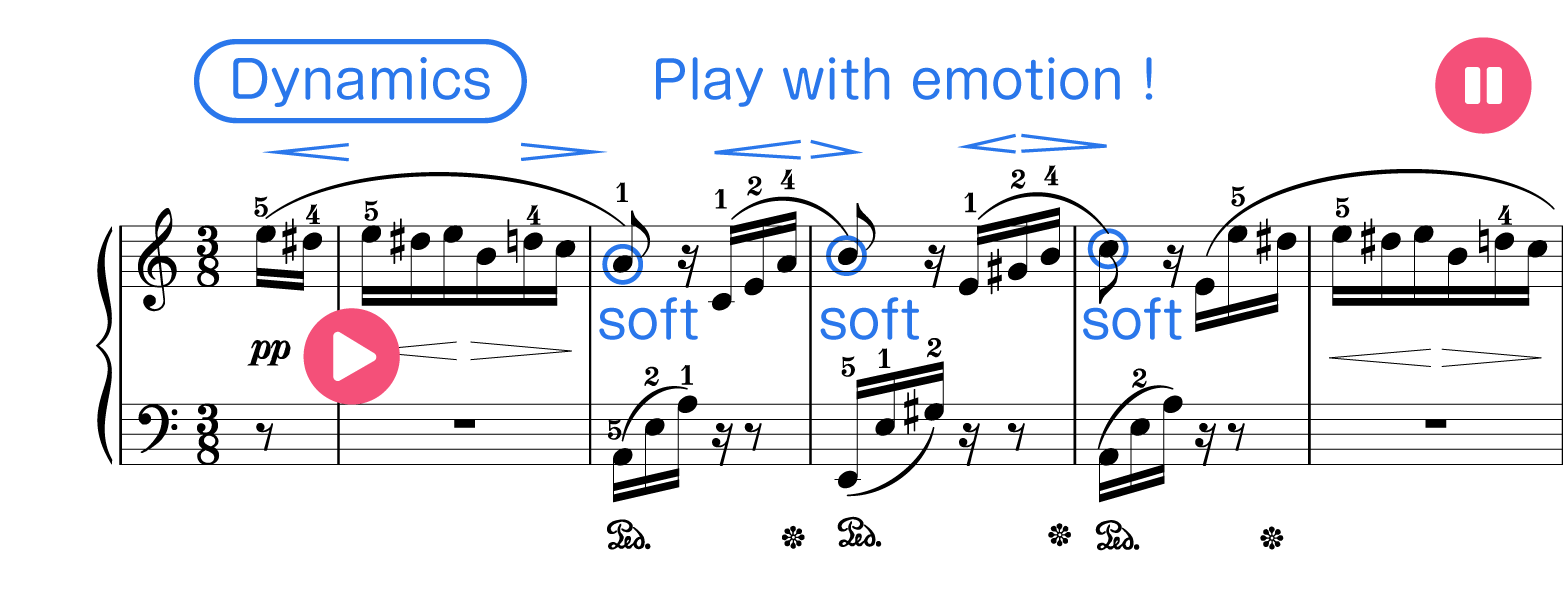
When playing (ED#ED#EBDCA), you can play soft and slow at first. Then feel expanding of the phrase. The end of phrase going to be soft.
When using No.1 finger, please be careful. It will be easy to be noisy.
Especially pay attention when playing the end of the (A).
When also playing (CEAB-)(EG#BC-), if you feel the phrase of ups and downs, you will be able to express the melody better.
Play Legato. (Smooth Out Each Sound.)
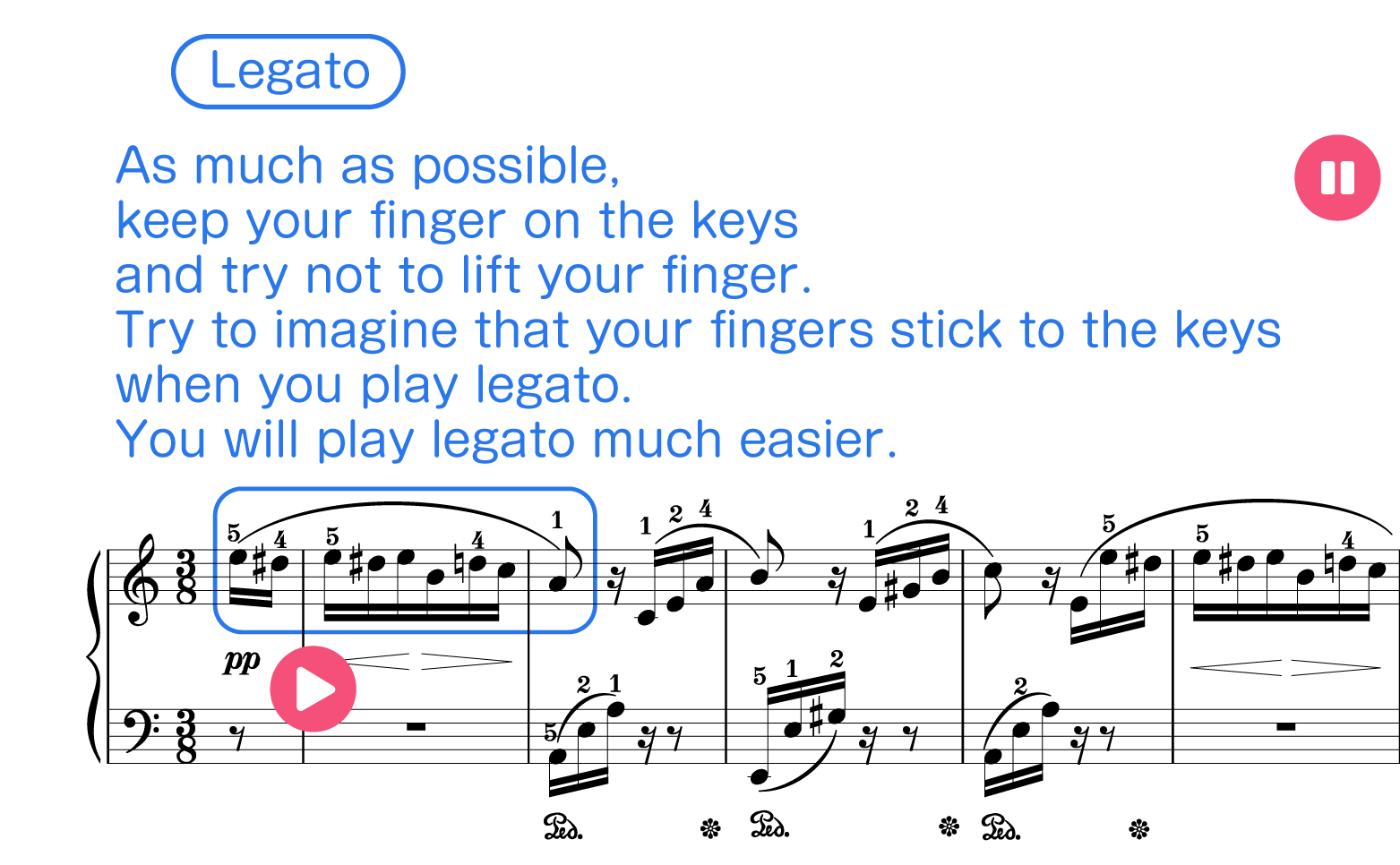
If you want to play more high quality legato (If it is possible…),
Listen to the sound that you play currently and next.
you should have a moment when you hear both.
(Take off the currently playing finger after playing the next note.)

When playing legato, try not to raise your fingers as much as possible and keep your fingers on the keys.
Prepare The Left Hand Octave Position !

When playing (AEA),if you prepare the octave's hand position, it will be easy to play. Remember to keep a good hand position and control your sounds softly.
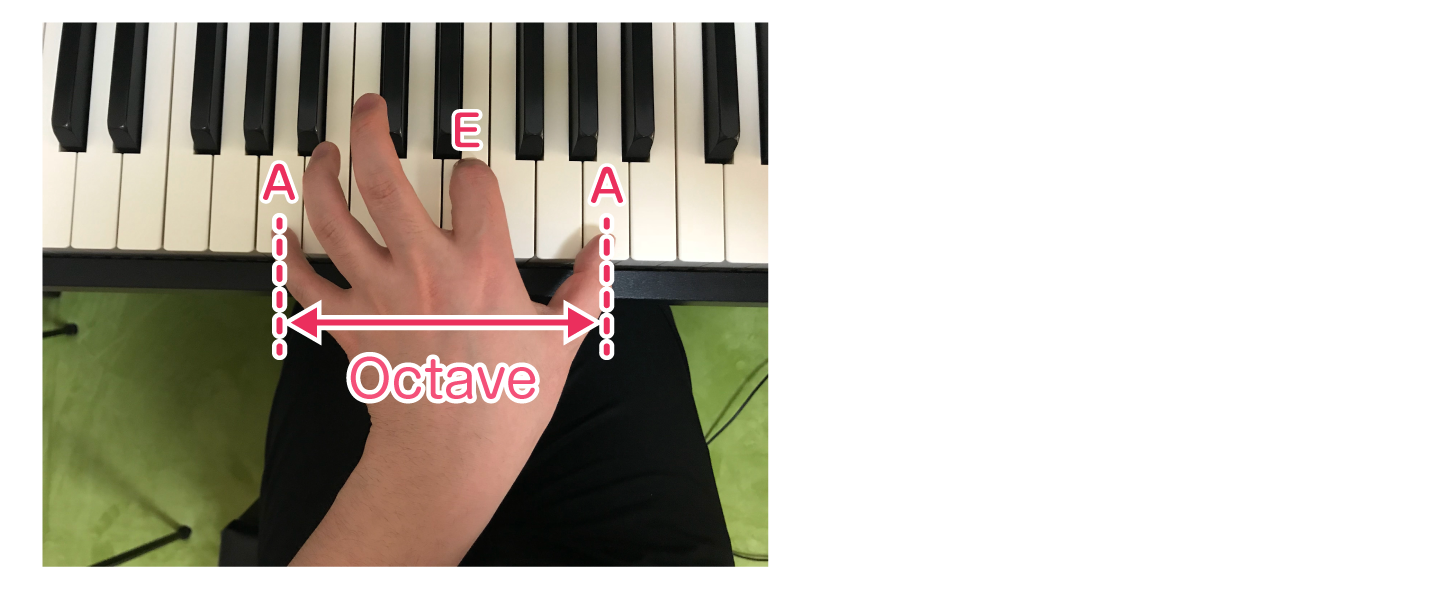
When playing (EEG#), EE is the octave. But, when playing G#, cross over your thumb with your index finger.
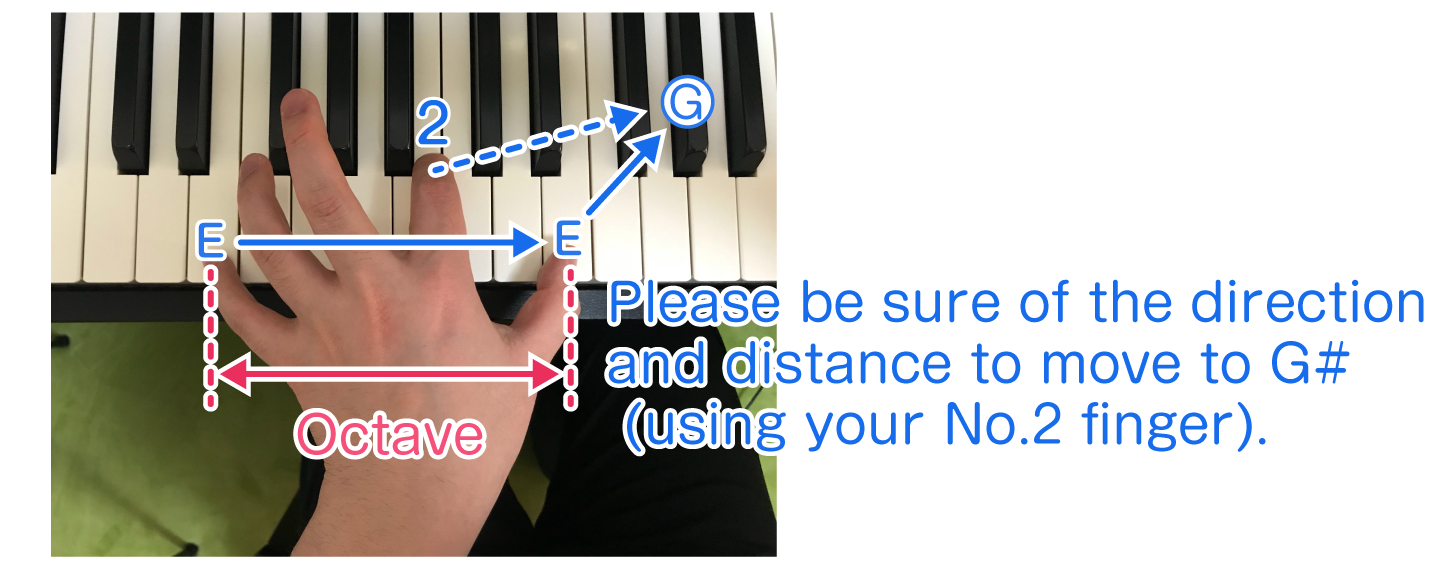
Tip: Practice a slow tempo that you can play well and remember how far you need to move your fingers.
When you practice, if you continue missing the keys so many times, your body and brain start to remember the wrong actions. It will be a negative practice. (Be careful !)
2. Relief the Phrase (BCDE-GFED-)
For a while, a brighter melody shows up.
You can play somewhat open minded and expressive in this moment.(BCDE-)(GFED-)

3. How To Practice the aLeft Hand's Jump.
It is the left hand's jump. After using No.5 finger, let the left-hand jump, and you can play 551. (Also, it is possible to play 5→1→2. But if you consider the next hand posture, probably, using 5→5→1 is a better choice.)
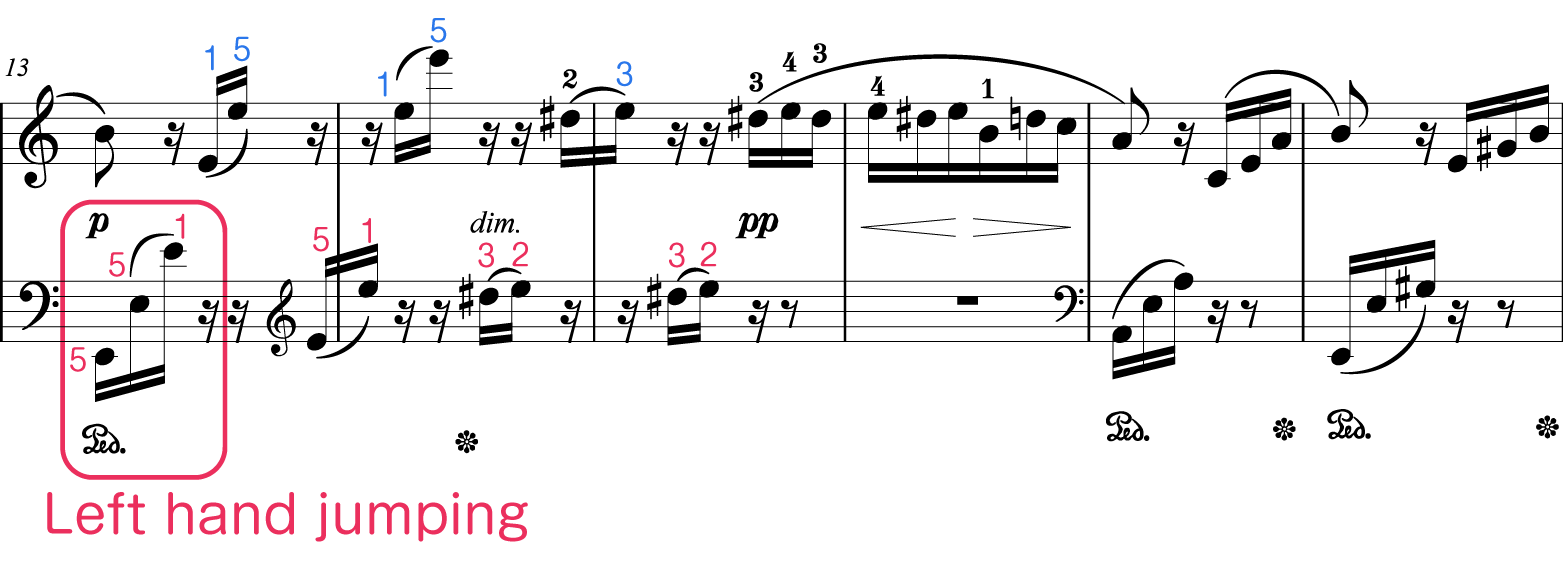
When you jump your hand, lift your elbow joint left to right.
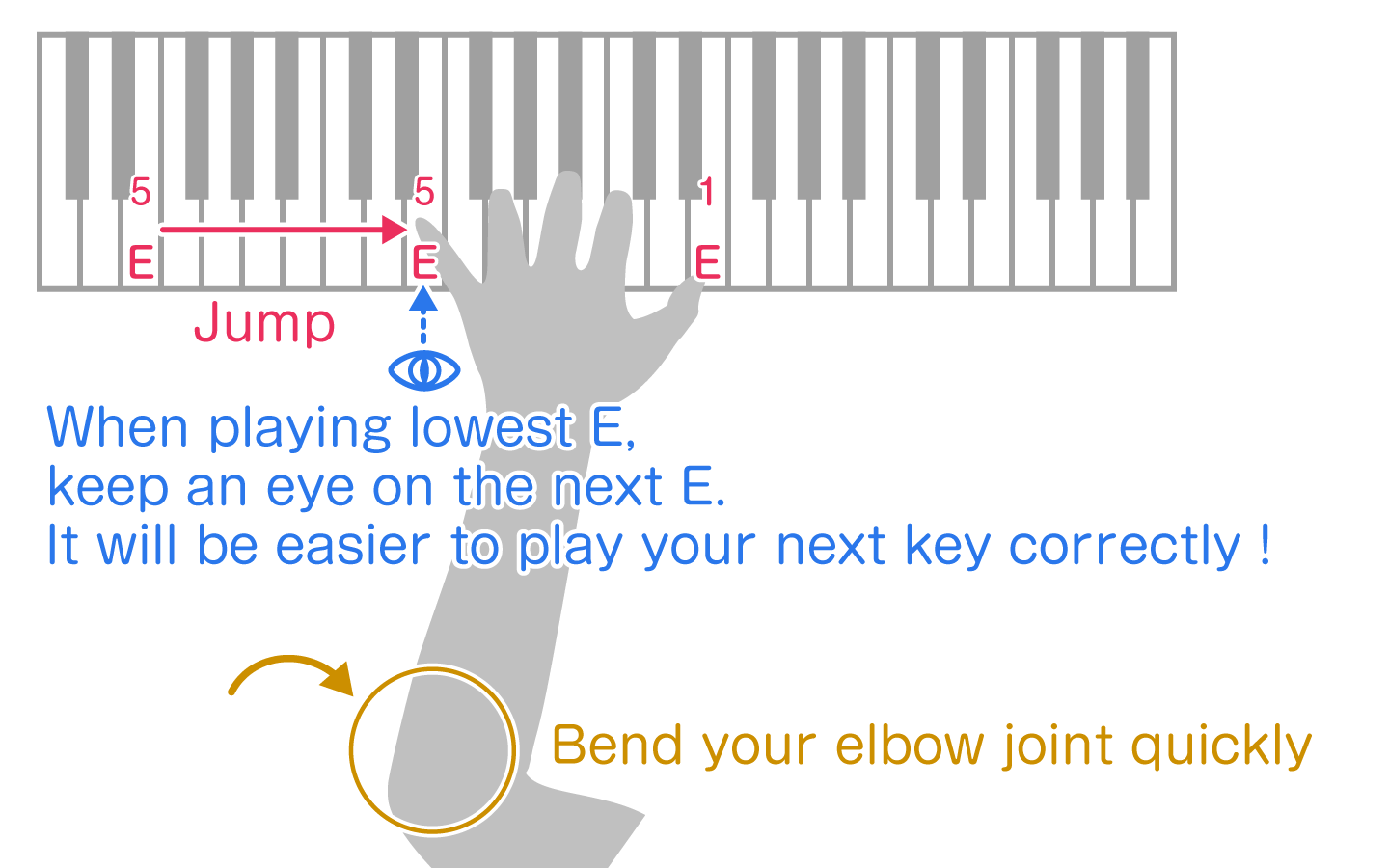
Anyone can move their elbow joint quickly,
so you will master it if you practice.
(It is same as shaking your arm when you say bye to somebody.)
It is important that you relax your muscles and release your tension.(Ex. fore-arm and upper arm etc.)
At first, you can start to practice slowly then adjust the speed so that you can play the keys well.
If You Use Your Right Hand ...
Especially, if you use your right hand in this part, you can play it without jumping your hand. (It will become much easier!)

However, if you practice the technique of jumping your hand, it is very beneficial for you in the long run. So, you should try!
3. Middle Section (B~)
1. How To Practice the Chords
This part is a little bit difficult because chords change delicately.


Follow the below 1~3 steps to practice. It is not so difficult.
1. Practice With One Hand (Horizontal Practice)
Pay attention to the posture of your hand, practice slowly and correctly.
2. Minimum Phrase Practice With Both Hands (Vertical Practice)
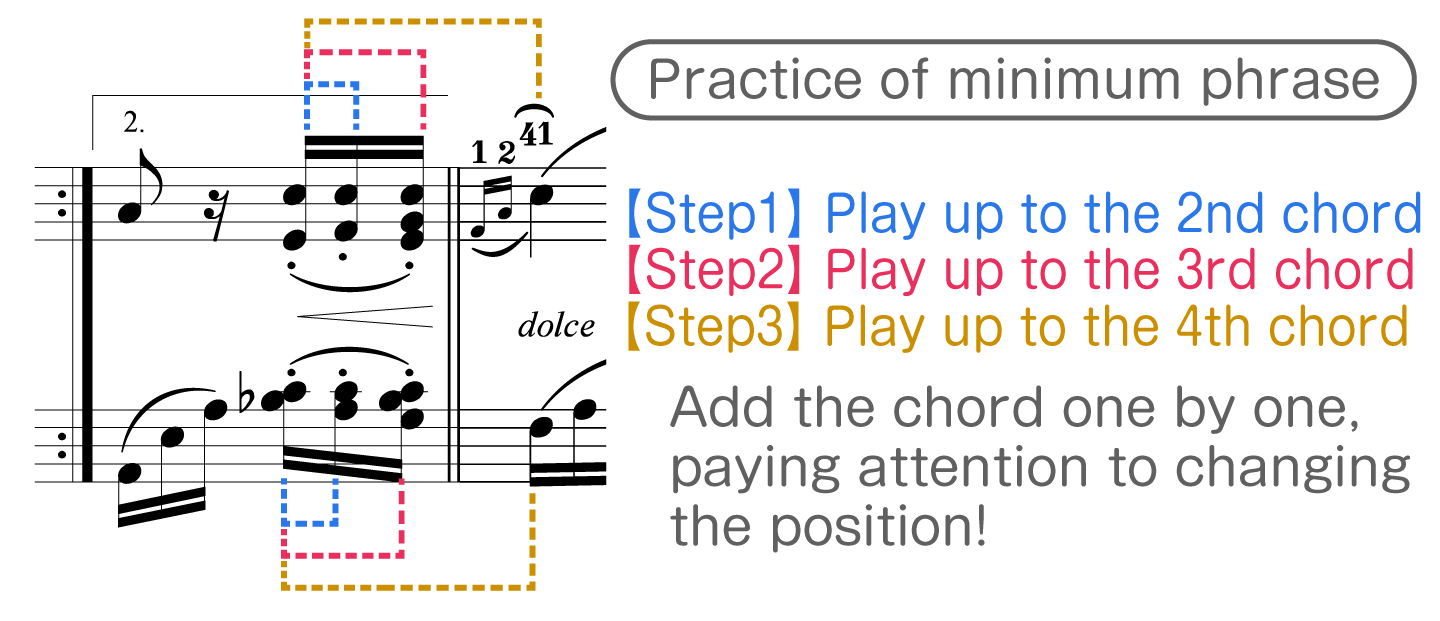
It's really important to practice minimum phrase with both hands.
For beginners, it's difficult to play well with both hands even if he could play well with each hand.
Playing both hands is completely different from playing one hand.
So try this practice slowly many times.
2. How To Practice the Melody and the Acompaniment
When you play the grace notes in the piece of Beethoven's period, play the first note of them on the beat.


If it's difficult for you, for starters, play the grace notes before the beat.
1. Practice With One Hand
Singing the notes while playing is very effective for your practice.
(For example, sing (FACACA) while playing the left hand part.)
2. "Staccato Excercise" Of The Left-Hand Part In mf [Optional]
If you can't play the left-hand part, you need muscle training a littel bit.
You should exercise 5 times a day.(That's enough !)
If you feel "Staccato Excercise" easy, feel free to stop exercise.
In my opinion, it makes effect in a week. Let's try!
3. Chords Practice With Melody[Optional]
By this practice,
You will be able to change the hand posture smoothly on the moment of the chord changes.
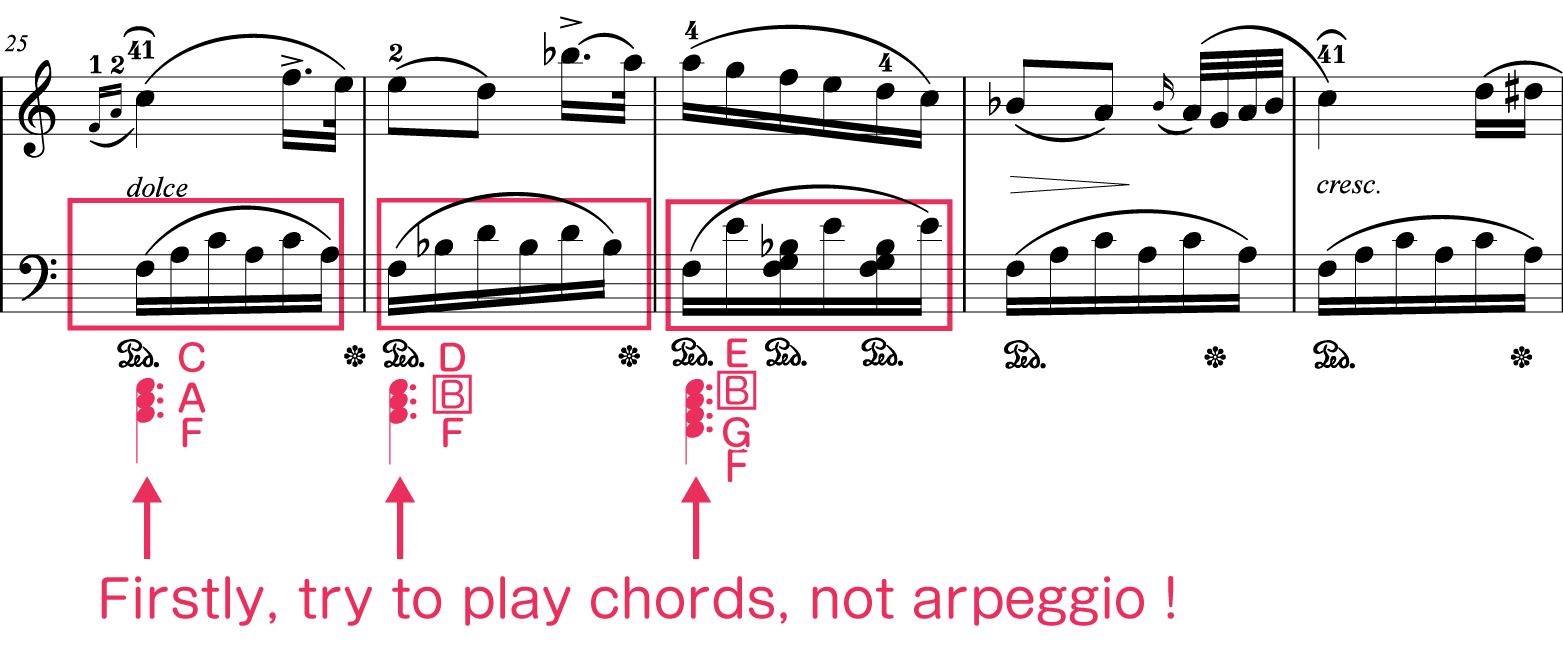
You can understand:
- How the posture of your left hand changes?
- When it changes?
4. Sing The Melody while Playing Left-Hand Part[Optional]
This practice is helpful keeping the tempo of your right hand.
Voice is easier to control so you can get feeling like both hands in the correct tempo.
But when you feel this more difficult than both hands practice, you don't need to do it.
5. Slowly With Both Hands (Playing Minimum Phrase Correctly)
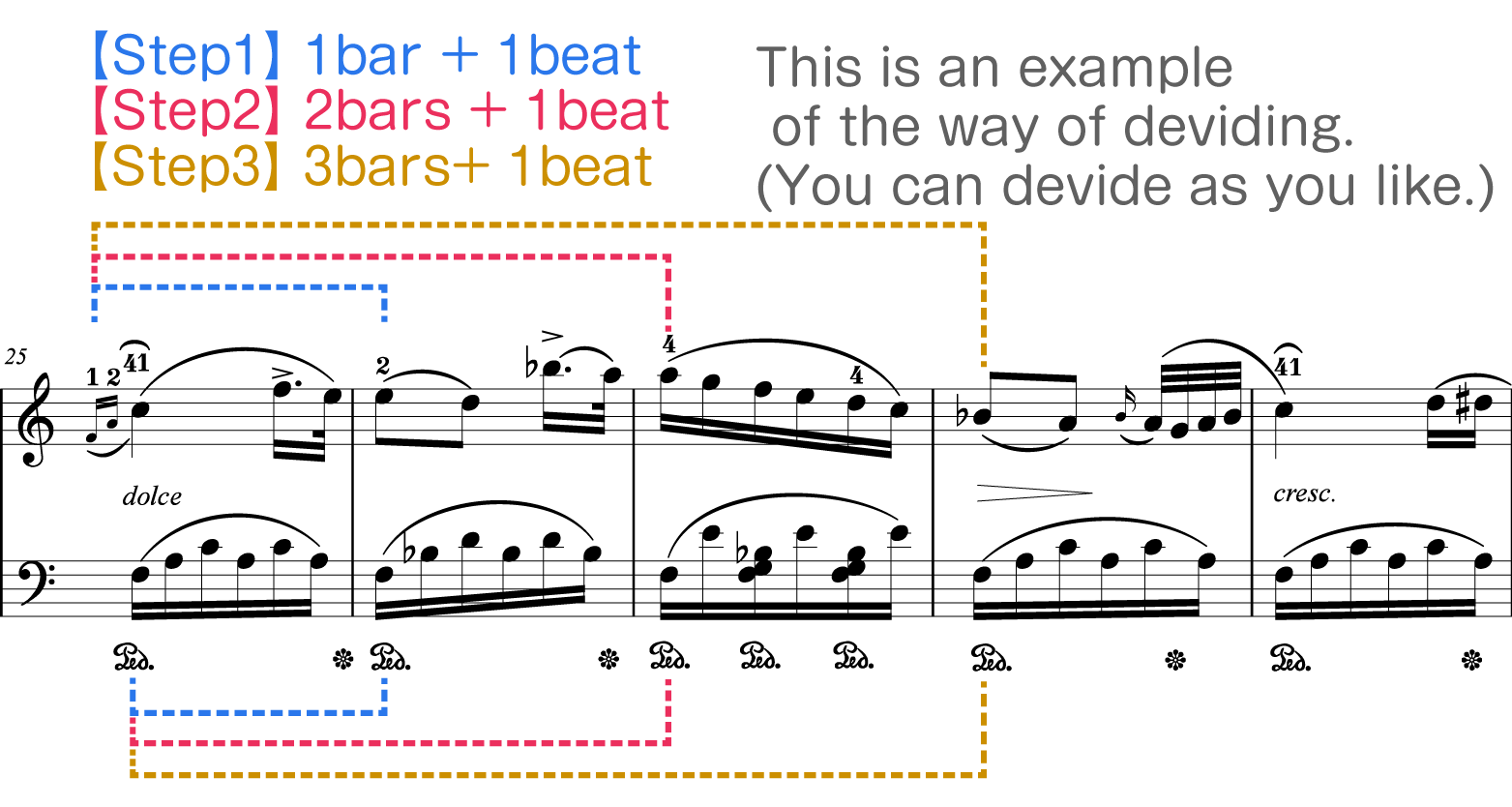
You don't need practice too long phrase at once,
but you should practice little by little and correctly!
3. Practice For 32nd Notes "Staccato" Or "Rhythm Exercise".
Here is the most difficult part of this piece.
It is good to practice in staccato or different rhythms because it requires finger muscles.


4. The Final part(C~)
1. How To Practice Chords And Repeated Notes
1. Practice With One Hand (Horizontal Practice)
The right-hand part is a little bit difficult. Practice by good finger numbers and master the posture of the right hand. (You can choose the fingering as you like, but you should make it fixed.)




In left-hand part, (3,2,1) is usually used. But in the case of slow repeated notes like this, you can use (3,3,3) or (1,1,1).
Because using the different fingeres on the same key makes it hard to control dymamics and rhythm.
Pressing the same key fast may force you to press the key that has not yet risen up.
And during the changing fingers,
it is hard to recognize a position of the key, that is rising up or have already risen up.
As a result, it tends to be difficult to press the key well.
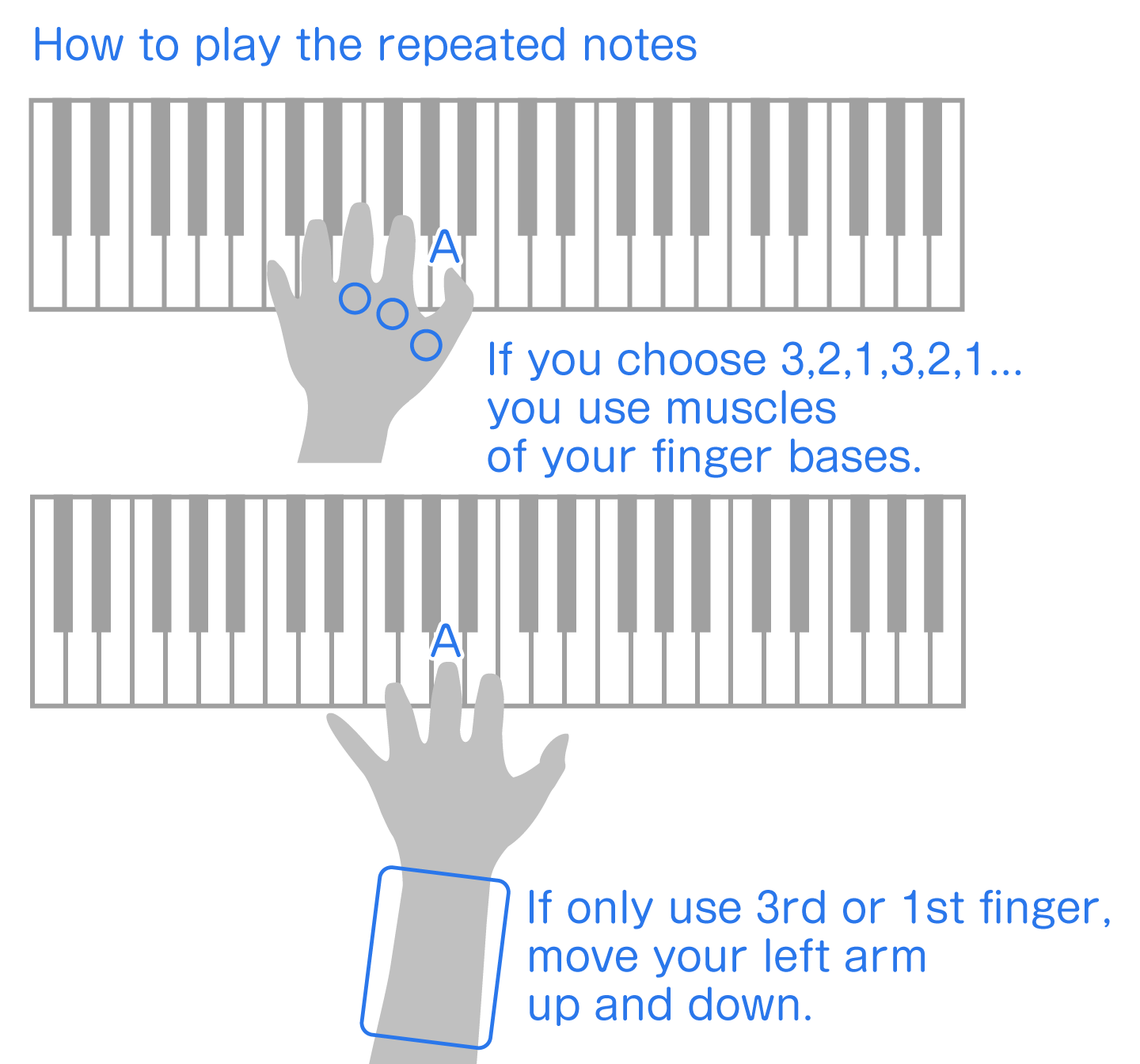
But using the same finger is not suitable for fast repeated notes.
If your teacher recommends (3,2,1), he supposes that you will play fast repeated notes in the future.
2. Minimum Phrase Practice With Both Hands (Vertical Practice)
Because of the same key in the left-hand part, vertical additional lines help you see the score easily.
About the minimum phrase practice. check this page.




2. "Thumb Under" Or "Jumping" For The Triplet Of 16th Notes
Though it'll be a bit more difficult, be careful not to accent on the note (A) when you change the fingers.
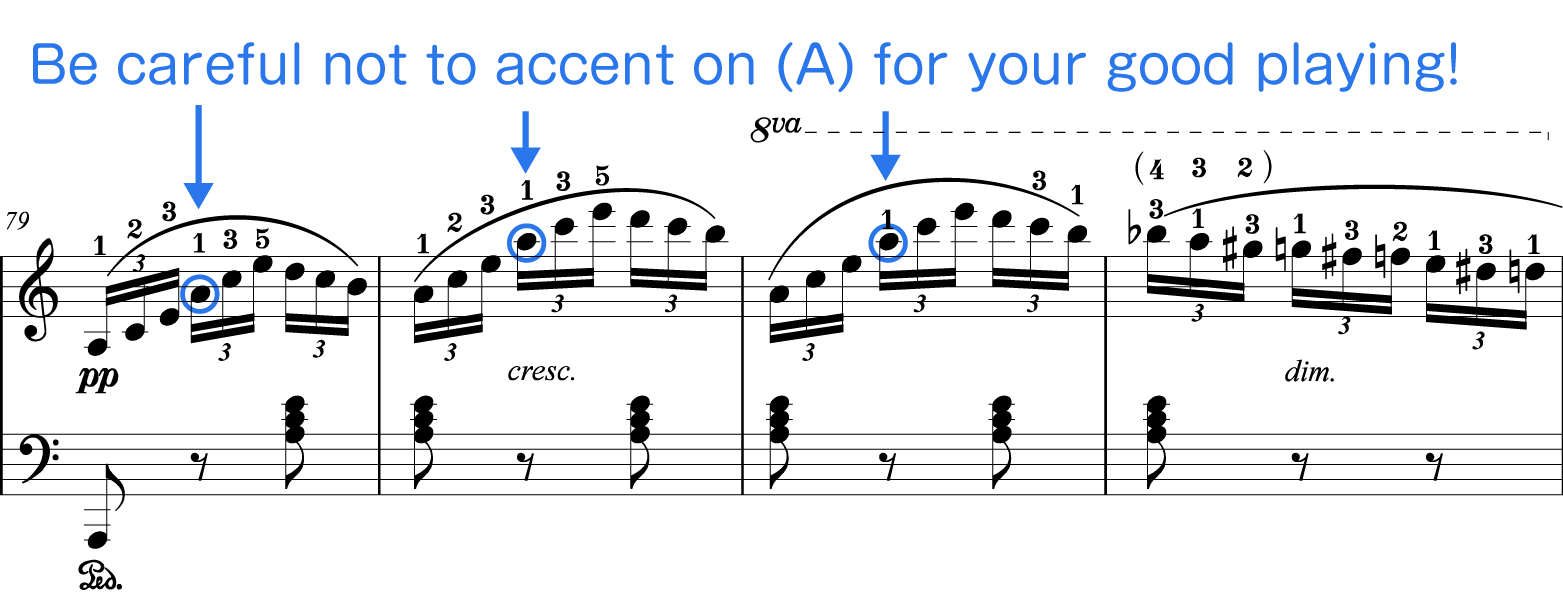

You can choose the 2 ways: "Thumb under" and "Jumping" for this phrase.
"Thumb under" is suitable for a near key, and "Jumping" for a far key.
The distance of (ACE)(A) is not so far, so many pianists use "Thum under", but you can use "Jumping", also.
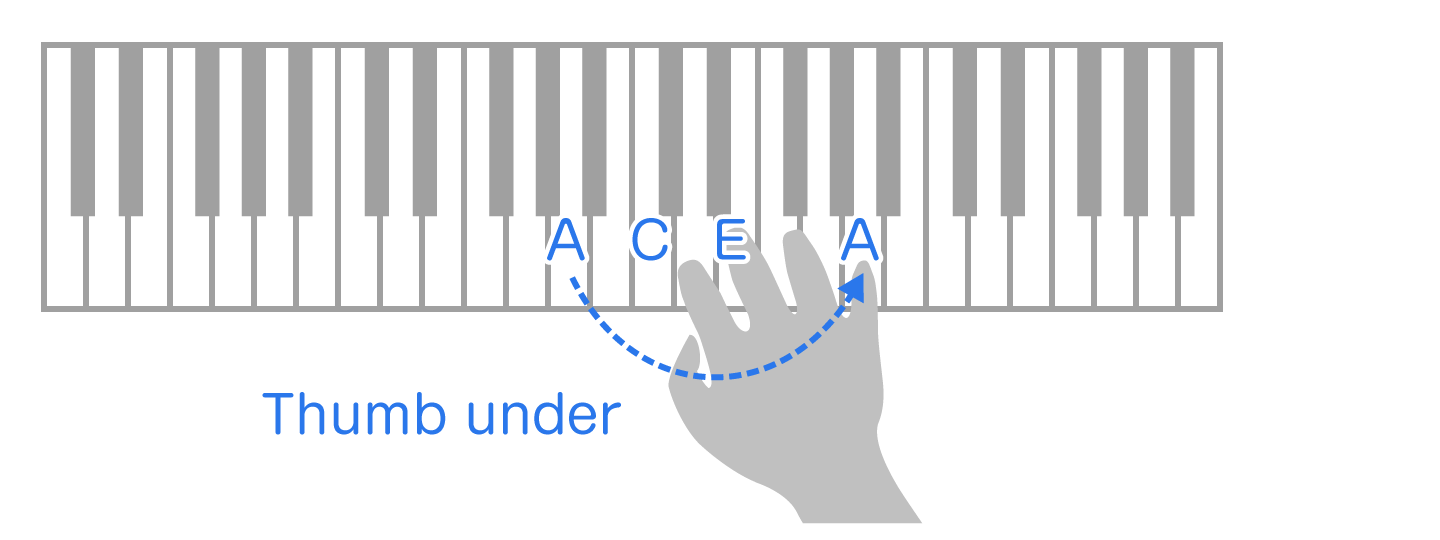
- You can hold the key(E) and play in legato easier. (Note: In this phrase, there's no problem because of using the sustain pedal.)
- Passing the thumb under the 2nd or 3rd finger is easier than the 4th finger. (Note: You will use the 3rd in this phrase.)
- You might make an unnecessary accent because of your wrist's up and down motion of "thumb under"
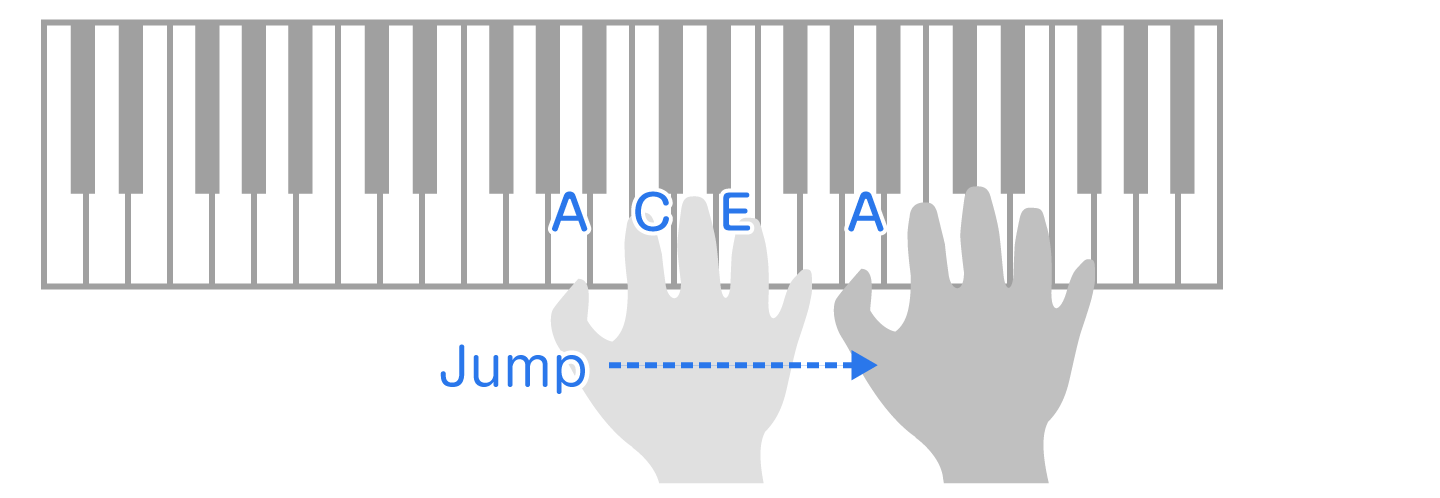
- You can easily control the keys (ACE) before jumping, because you can keep the angle to the keyboard.
- You should be careful not to make an unnecessary accent on (A) after jumping.(Jump quickly, and put your finger down slowly.)
About practice of "Jumping", please check this out.
3. How To Keep The Tempo
You should keep the tempo when the theme (ED#EBDCA) is back after the chromatic scale.
Crap your hand on the beat, sing (B♭AG#, GF#F, ED#D, C#CB, B♭AG#, GF#F, ED#, EB, DC, A), and you can get the feel of 3/8 time.
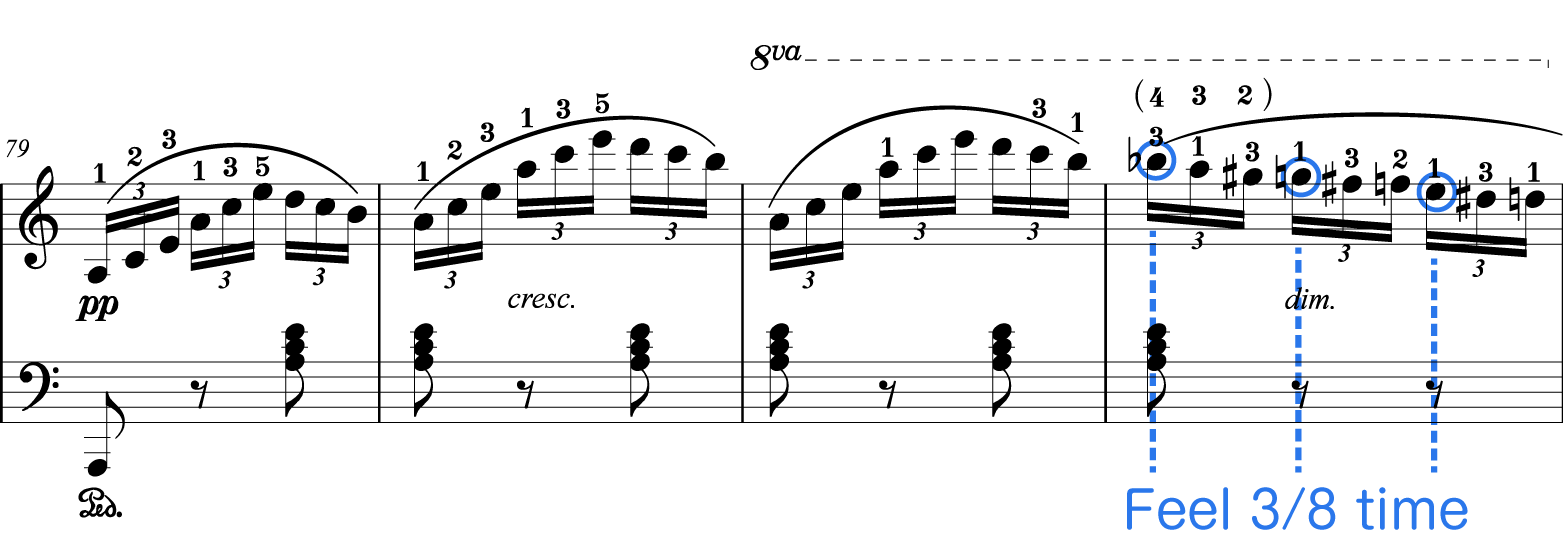

I don't mean you should accent the notes on the beat. Try to feel the beat in your mind.

